A Professional Organizer’s Guide to Organizing Offices
This will be the last blog (for now!) in our series of organizing guides. In the coming months, you can expect to see more posts detailing how to improve and expand your organizing business. But we thought it would be timely to have office organization as the bridge between the two.
Because while this blog is about helping your clients get their office spaces in order, maybe your own home office needs a little refresh as well!
By the way, have you followed us on Instagram yet? We share a lot of visuals that go along with what we talk about here, plus a whole lot more!
The design
Offices (especially ones in the home) come in all shapes and sizes. And we can bet that your clients all work very differently. So, it’s important to set up a system that specifically works for them and their space.
FYI here’s a link to our office organization design tips on Instagram.
Home office tips:
- A home office is oftentimes a multi-purpose space, where work and personal papers collide, a craft space, a workout area, part guest room, storage, etc. so recognize that going into the project.
- Be sure to have your client clarify how they would like (or need) the space to function so you can set up the various zones.
“Office” office tips:
- If you’ve been hired to organize a corporate office for a business, always make sure you know who your designated point of contact is (many times it’s the office manager!) to direct your questions.
- Sometimes employees will be wary of you moving the things they need to do their job, so communication is extra important in this case.
Tips for visual workers:
- If your client prefers to see all of their things, cater your design to be neat but still accessible.
- Vertical wall-mounted file sorters, dry-erase memo boards or calendars, and an oversized desktop organizer for all of their office supplies (i.e. pens, paperclips, etc.) will be ideal for them.
Tips for out-of-sight, out-of-mind workers:
- For those who don’t work well with visual clutter, consider concealed storage so they can reach for their things only when necessary.
- Close file cabinets (or convincing them to be more paperless!), in drawer organizers, and lidded bins on shelves (with labels of course!) will be more up their alley.
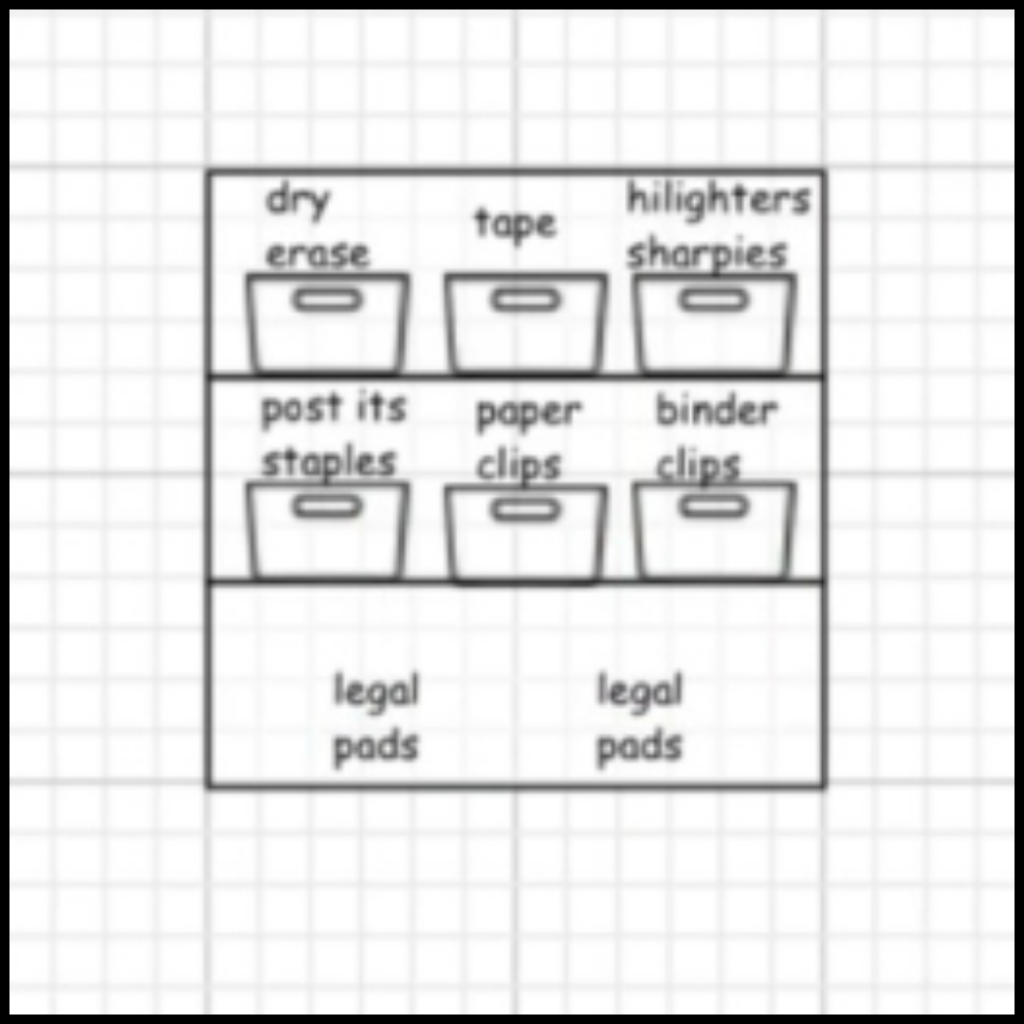
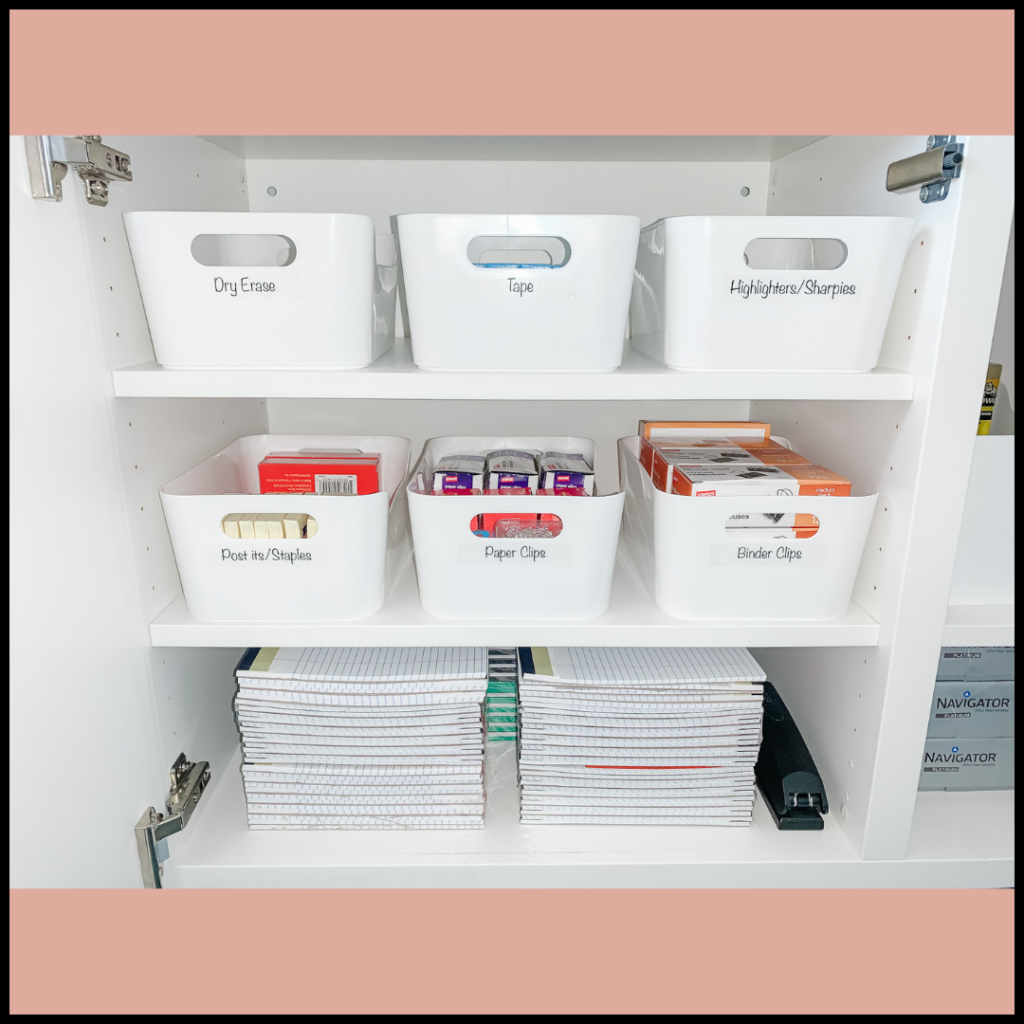
FYI you can use Sortifi to plan whole office layouts, supply closets, desktops, and drawers. But, fun fact, you can also add your own flair to your designs…
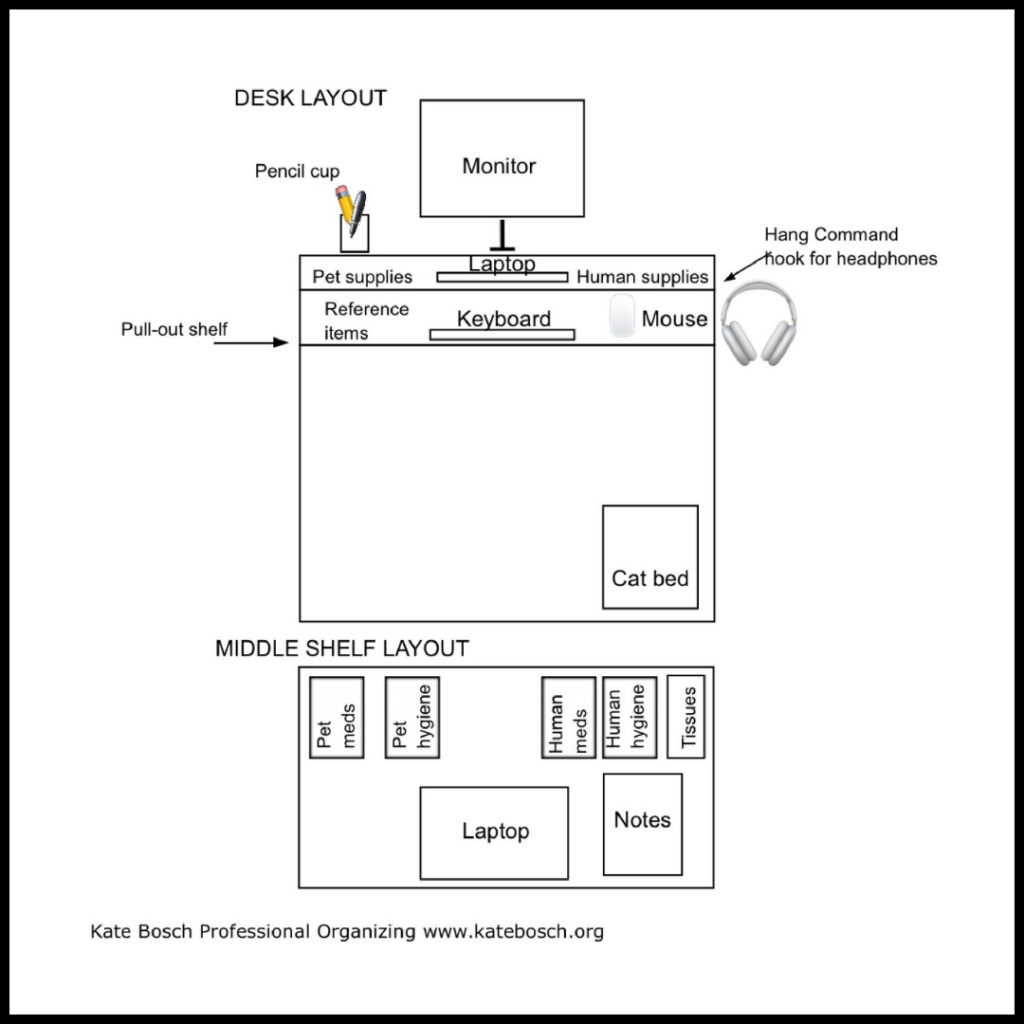
Kate, owner of Kate Bosch Professional Organizing, used emojis to make her Sortifi design pop!
The big debate: paper vs. digital
Ideally, your client is open to being as digital as possible to avoid paper clutter piles. However, they must still store hard copies of important docs such as:
- Passports
- Marriage and birth certificates/divorce decrees
- Home deeds
- Tax paperwork*
*Speaking of taxes, create folders for them labeled Tax Year 1 – Tax Year 7. Then, all your client has to do is move their tax paperwork to their respective folder every new year and shred the year 8 taxes. Of course, always have them confirm with a tax professional because they may be in an industry with different parameters.
Psst, we’ve created a freebie for you! Click here to grab our Essential Documents Checklist and make a copy so you can brand it as your own and give to your clients.
If your client wants to retain some paper files, keep it simple for them! Use a different color for each category of paperwork and be somewhat broad with their labels. For example:
- Financial
- Home
- Medical
- Taxes
- Auto
Regardless of their preference, recommend that your clients take their paperwork that needs to be shredded to an upcoming free town shredding event or a local shredding company. Or have them try Office Depot or Staples! It is totally secure and only costs $1/lb of paper, which is usually worth the time and effort it takes to shred on their own.
The products
Here are a few of our favorite organizers that help keep everything from desktops to desk drawers and paper files to office walls in order.
Desktop organizers
If they need things at their fingertips, arm them with the right desktop tools such as these.
- Marie Kondo linen desktop organizer
- Water hyacinth desktop box
- Acrylic divided lazy susan
- Metal monitor stand with bamboo storage drawer
- Bigso desktop organizer
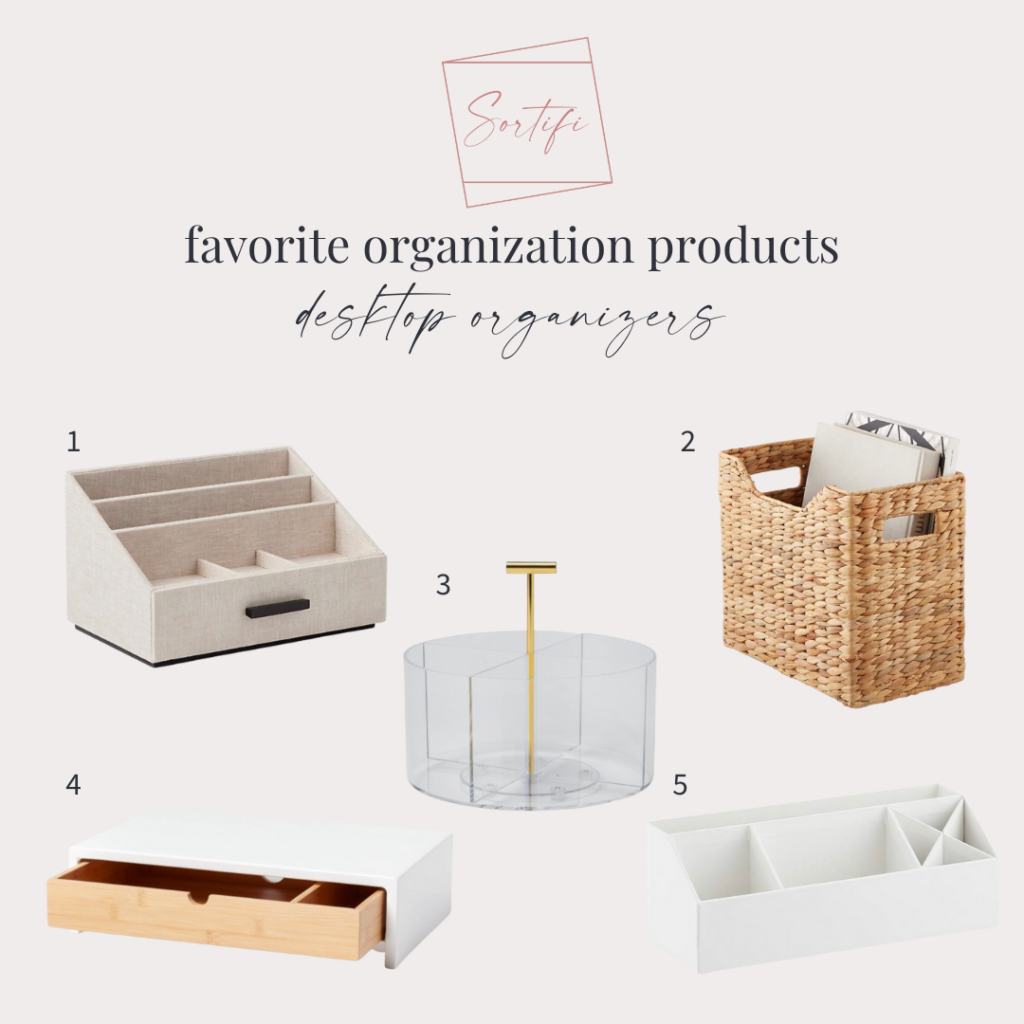
Check out these products in this Instagram post.
Drawer organizers
For those clients that don’t want visual clutter, use their desk drawers to corral – yet hide – office supplies.
- Acrylic and gold stackable set
- Bamboo organizer set
- THE by iDesign expandable drawer organizer
- Neat Everyday drawer organizers
- SpaceAid drawer divider with inserts
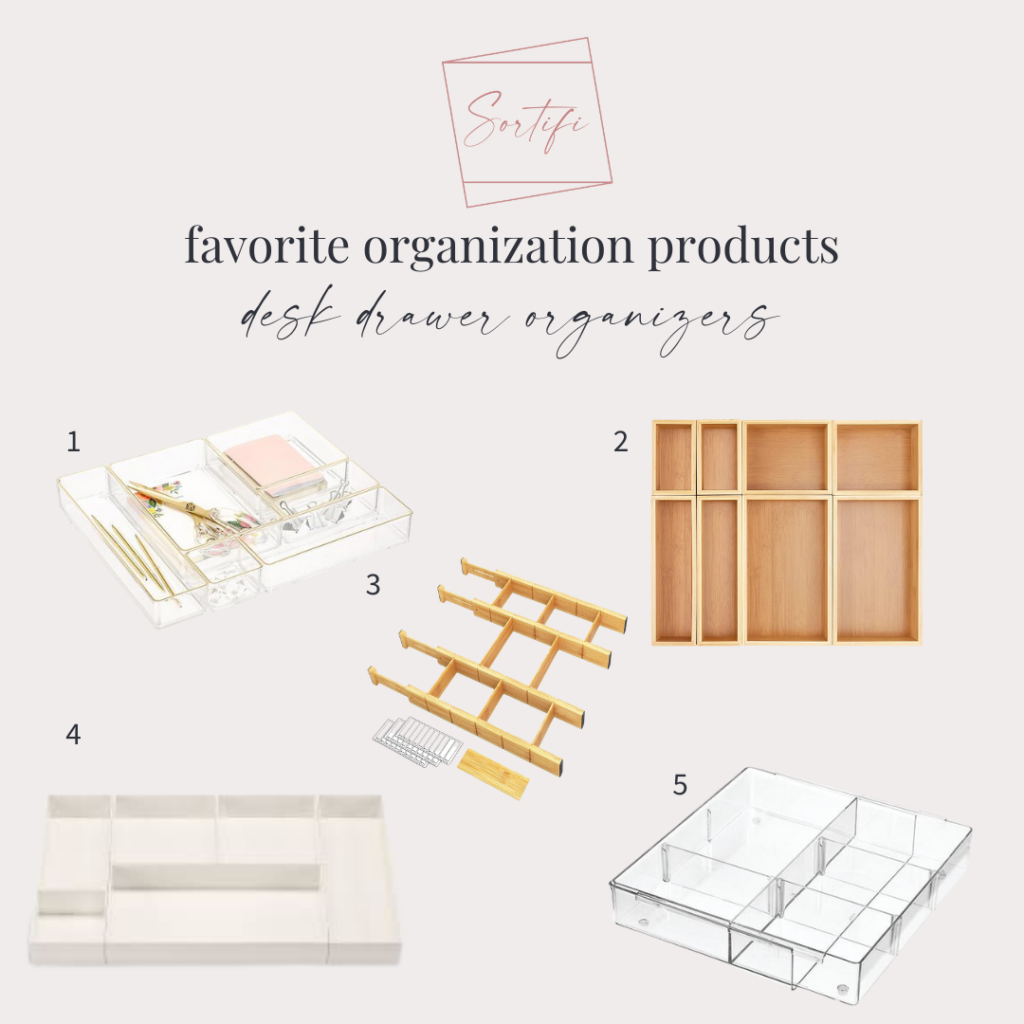
Check out these products in this Instagram post.
File organizers
Even your most paperless clients will most likely have some level of physical paperwork to keep organized. Suggest something cute like one of these file holders!
- Threshold wood file box
- Marie Kondo calm desktop file box
- Stacking letter tray
- Wayfair 2-drawer vertical file cabinet
- Water hyacinth file storage bench
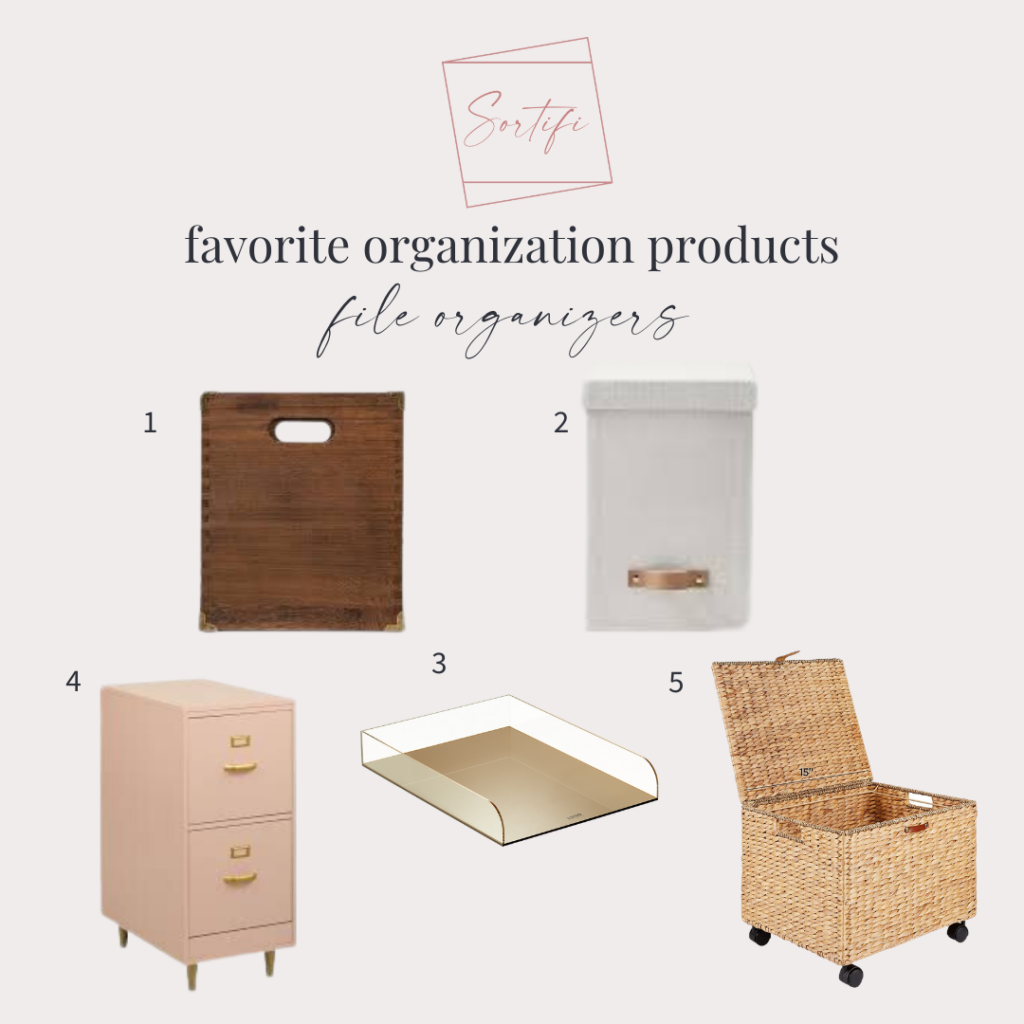
Check out these products in this Instagram post.
Wall organizers
Take advantage of vertical space in a small home office (or cloffice) by using blank walls to organize files, supplies, or even your client’s schedule.
- Threshold acrylic wall pocket
- Monthly dry-erase calendar
- Mesh-tiered wall mount organizer
- Bello pegboard accessories
- Set of floating bookshelves
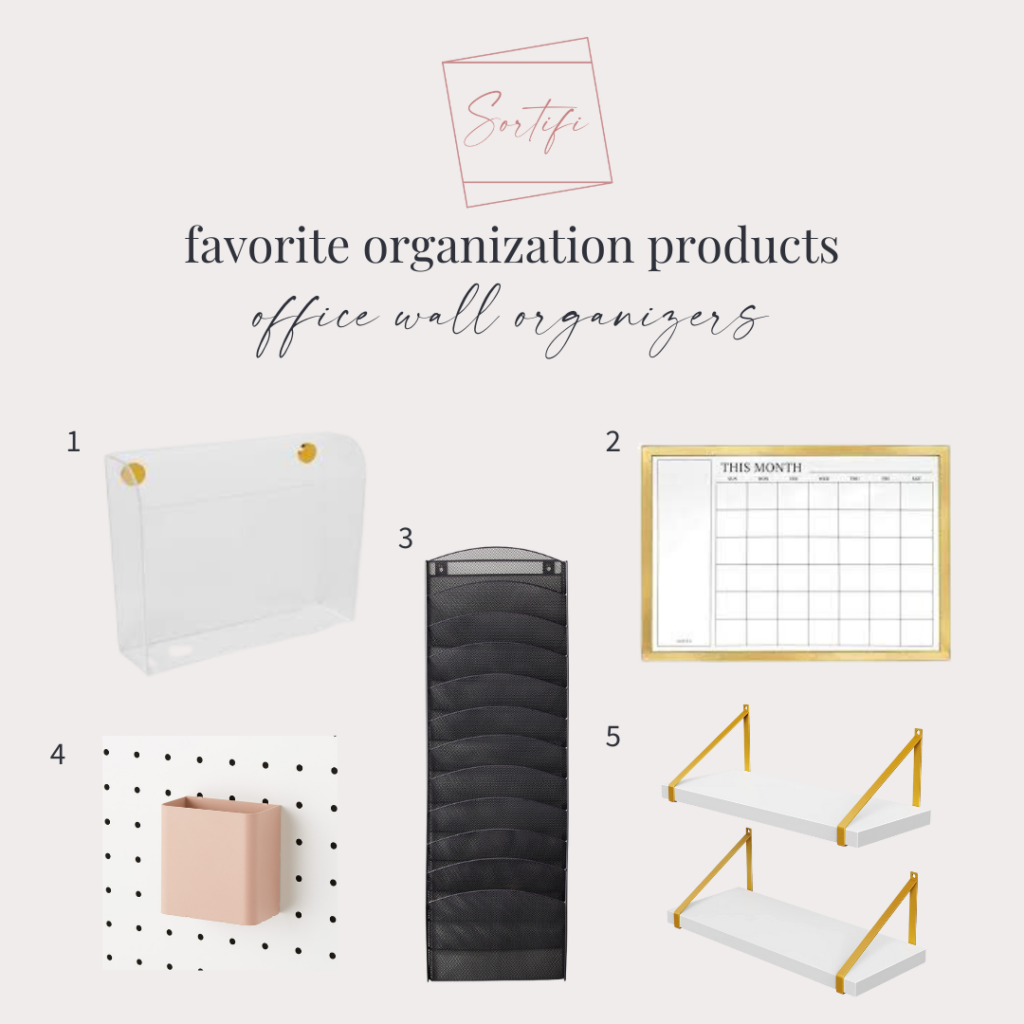
Check out these products in this Instagram post.
If you haven’t tried out Sortifi yet for your professional organizing business, sign up for a free one week trial HERE and simplify your design processes.
